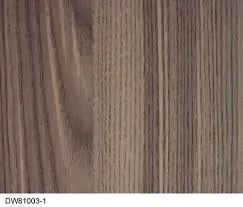- Home
- duplex paper manufacturing process products
Nov . 24, 2024 07:25 Back to list
duplex paper manufacturing process products
The Duplex Paper Manufacturing Process
Duplex paper has gained significant popularity in various industries due to its unique properties and versatility. This type of paper, characterized by a smooth finish and a robust structure, is often used in packaging, printing, and labeling. The manufacturing process of duplex paper involves several intricate steps, each of which contributes to the final product's quality and usability.
Raw Materials
The production of duplex paper primarily begins with the selection of raw materials. The main components include wood pulp, recycled paper, and various chemical additives. The primary source of pulp is often derived from both softwood and hardwood trees, providing the necessary fibrous content to ensure strength and durability. Recycled paper is also a significant component, helping reduce environmental impact and promoting sustainability in the manufacturing process.
Pulping Process
Once the raw materials are gathered, the next step is the pulping process. This can involve mechanical, chemical, or a combination of both methods to separate the cellulose fibers from the lignin and other non-fibrous components of the wood. In chemical pulping, substances like sodium hydroxide and sodium sulfide are used to break down the lignin, resulting in a high-quality pulp. After pulping, the resulting slurry is screened and cleaned to remove any contaminants or oversized particles.
Bleaching
The obtained pulp often undergoes a bleaching process to achieve the desired whiteness and brightness. This step is crucial, especially for duplex paper meant for high-quality printing and packaging. Common bleaching agents include chlorine dioxide, hydrogen peroxide, and oxygen. These agents work to lighten the pulp without compromising its strength. The level of bleaching can vary depending on the final use of the duplex paper.
Sheet Formation
Following the bleaching process, the pulp slurry is then diluted with water and transported to a paper machine where it undergoes sheet formation. The pulp is spread onto a moving wire mesh, allowing the water to drain away and leaving behind a mat of fibers. This mat is then pressed to remove additional moisture and to consolidate the fibers, resulting in a wet sheet of paper.
duplex paper manufacturing process products

Drying
The wet sheets are transferred to dryers, where they are subjected to heated rollers that remove any remaining moisture. This drying phase is crucial as it affects the paper's final properties, such as its strength, smoothness, and finish. The paper is then wound into rolls, ready for further processing.
Coating
To enhance the surface properties of duplex paper, a coating process may be employed. This involves applying a layer of materials such as clay or calcium carbonate on one or both sides of the paper. The coating process improves the printability and provides a smooth surface, making it ideal for high-quality graphics and vibrant colors. Depending on the requirements, duplex paper can be coated on one side (duplex) or both sides (triplex), catering to various applications.
Finishing Touches
After the coating, the duplex paper undergoes a series of finishing processes, which may include calendering, slitting, and packaging. Calendering involves passing the paper through a series of rollers to smoothen the surface further and increase its density. Slitting cuts the large rolls into smaller, more manageable sizes, catering to different industry needs. Finally, the finished duplex paper is packaged and prepared for distribution.
Environmental Considerations
The duplex paper manufacturing process emphasizes sustainability and environmental responsibility. Manufacturers strive to minimize waste, recycle water, and utilize eco-friendly chemicals. Additionally, the incorporation of recycled materials significantly reduces the demand for virgin pulp, demonstrating a commitment to preserving forest resources.
Conclusion
In summary, the duplex paper manufacturing process is a complex yet fascinating journey from raw materials to finished product. Through various stages, including pulping, bleaching, sheet formation, drying, coating, and finishing, high-quality duplex paper is produced, catering to a myriad of applications in the modern world. As industries continue to emphasize sustainability, duplex paper will likely play a pivotal role in eco-friendly packaging and printing solutions.
Latest news
-
High-Quality Bathroom Cabinet Contact Paper – Durable & Stylish Leading Suppliers, Exporters, Manufacturers
NewsJul.08,2025
-
Premium Wood Contact Paper for Desk – Reliable Suppliers & Exporters
NewsJul.08,2025
-
Premium Contact Paper for Table Top – Durable & Stylish Surface Solution from Leading Manufacturer
NewsJul.07,2025
-
Duplex Board with Grey Back - Reliable Supplier & Competitive Price Manufacturer & Exporter
NewsJul.07,2025
-
Premium White Contact Paper on Cabinets – Trusted Exporters & Suppliers
NewsJul.06,2025
-
High-Quality Duplex Board Packaging for Food Reliable Manufacturer & Supplier
NewsJul.06,2025

